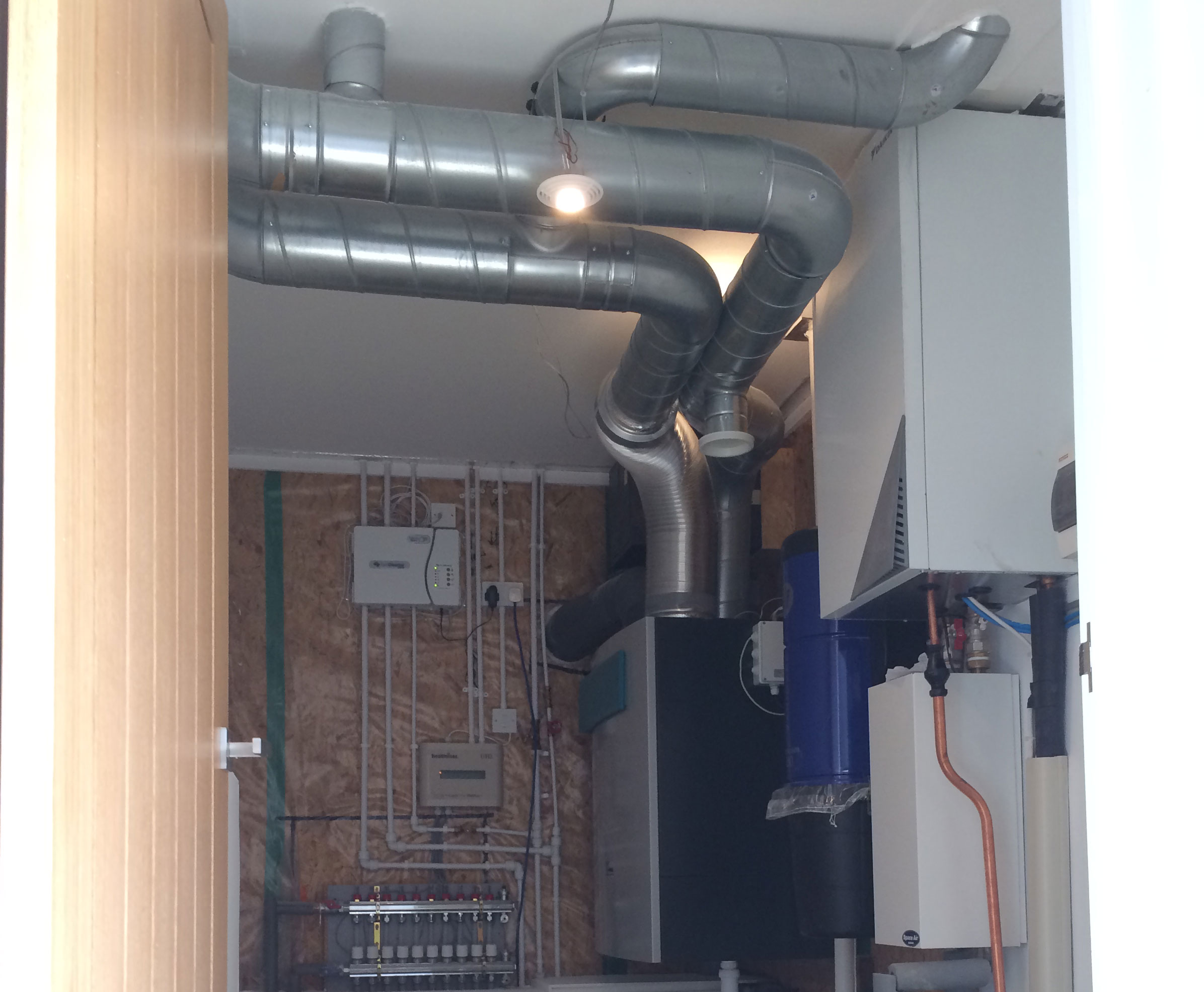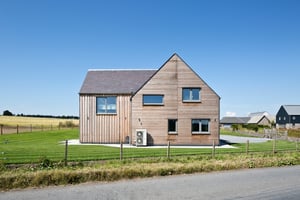FIRST OF ALL, WHO ARE MOLLISON HPR, AND WHERE ARE YOU BASED?
Mollison HPR (Heating, Plumbing, Renewables) is a small company based in Dundee offering specialised and bespoke solutions for projects within the Plumbing, Heating and Renewables field. This includes designing, tailoring and installing heating systems which may use a variety of different heat methods, some of which include Gas, Heat Pumps, Solar and Biomass.
WHAT EXACTLY IS A HEATING SYSTEM, AND AT WHAT STAGE OF A SELF BUILD PROJECT SHOULD ITS DESIGN BE CONSIDERED?
A Heating System is the method by which we keep our homes from getting cold and keep our water hot, particularly during the winter months. The way in which we do this can vary incredibly and the system installed generally depends on what is effective, efficient and economical for the property.
For a Self-build project, the heating system design should be one the first things to have done once the Architect has completed and issued the technical drawings. This allows the system and heat losses to be specified early and also highlights any special requirements, for example, required groundworks for a Geothermal Heat Pump or floor layouts for Underfloor Heating.

ARE THERE PARTICULAR TYPES OF HEATING SYSTEMS YOU WOULD RECOMMEND FOR CERTAIN PROJECTS? ARE THERE NOTABLE DIFFERENCES BETWEEN THEM?
Heating system design and the type of heating system (or systems) to be used is generally dependent on the Fabric and Ventilation Heat Loss of the property and the availability of certain resources that allows the integration of specific heat sources. Its capability can also be determined by the desires of the end user.
DO SELF-BUILD PROJECTS GENERALLY LEND THEMSELVES TO A HEATING SYSTEM WHICH IS MORE BESPOKE IN DESIGN?
It is generally found that as modern new build property, particularly self-build, is designed using the latest and most effective heat retention methods, in particular to the high levels of insulation, that the heat loss of the property is very low compared to a similar sized property built in say 1960. This has the result that the home requires a lot less in the way of heating and in some cases the home can be considered as passive (requiring very little or even nothing at all in the way of a direct heating system).
We generally find that with this high heat retaining, self-build style of property that a low carbon, low temperature and low running cost heating system is what is required. This can range from using a highly efficient low temperature Ground (depending on ground area availability) or Air Source Heat Pump to a condensing Gas Combined Heat and Power Boiler that uses certain controls to limit the output temperature from the appliance and thus reducing the volume of gas consumed.
Available resources on various projects can vary greatly and have a significant impact on the type of system installed. Resources can include the availability of a natural gas main to feed a gas condensing boiler, the availability of roof space to allow for a solar PV or Thermal system to be fitted to assist in the production of heating and hot water or even the availability of suppliers and access to the property for fuel for a Pellet Boiler.

WHAT COSTS ARE INVOLVED, AND DO YOU NEED A SPECIALIST TO INSTALL THE HEATING SYSTEM?
The three major differences between any of the vast amount of heating systems available regardless of anything else is the capital cost, the running cost and how environmentally friendly it is. There is, however, currently a number of grants and incentives which will reduce the initial outlay of a low carbon system which allows us to be more environmentally friendly, increasing the Standard Assessment Procedure (SAP) rating of our homes whilst also saving a bit on cost at the same time.
Typically, the more bespoke the system the higher the capital cost, but the running cost and environmental impact can be very low indeed. We have installed systems where we have integrated all manner of different technologies which were initially quite costly to install and configure, now run so efficiently and precisely that the cost to run is almost unnoticed.
I would always recommend using a specialist for the installation of a heating system, regardless of how simple or complex it may be and in particular to the installation of gas appliances where it is a legal requirement. You always want to find someone that really knows what they are talking about and has the installation experience and evidence to back it up.
Working with the Architect is a fundamental part of providing a quality solution and the earlier this is done the better as the rest will fall into place. Usually when the Architect has produced the plans for the build and provided us with the relevant information we can then carry out a full room by room ventilation and fabric heat loss calculation. This gives us the exact figures needed to decide on the best heating solutions.
Once this is completed a few viable proposals are produced which include information such as annual running costs and system specifications. We will then have a meeting involving the Customer, Architect, Ourselves and any other relevant parties to present and discuss the pros and cons of each.

Research is the key word here. Research everything, from what is available on the market, which manufacturers technology gets a good write up and what other people think of systems they have had installed. Bear in mind, what works for someone else may not be what you are looking for.
Also, research potential installers, make sure whichever installer you use know what they are doing. Best ways of doing this are to check them out online via customer reviews or even contact manufacturers and see who their recommended local installers are.
A good installer may also save you a great deal of time and confusion on deciding on the best products and system as they should already have an extensive knowledge on what works and what doesn’t. Their advice should be fundamental to your decision and it helps to use an Architect with a good appreciation on energy efficient heating systems. Check that everything including products and installers have the appropriate certification and get at least three quotes.




